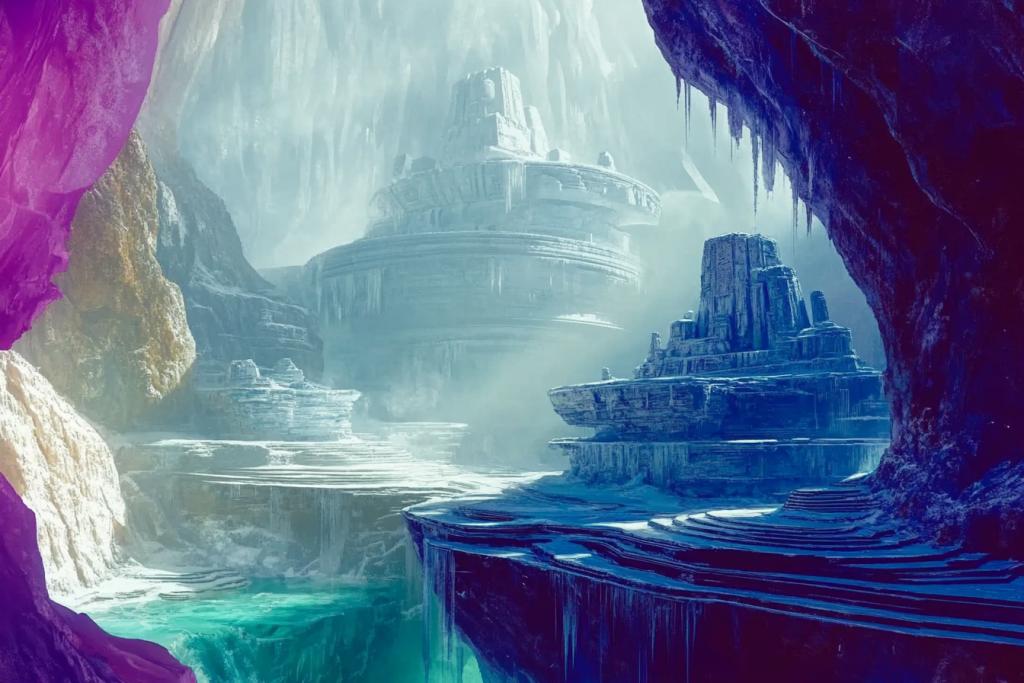
Scattered across the globe, far from bustling cities and well-trodden paths, lie strange and unexplained structures carved, stacked, and assembled with precision that seems beyond their time. Found in deserts, jungles, mountains, and beneath oceans, these architectural anomalies raise more questions than answers. Who built them, how were they made, and—perhaps most perplexing—why were they constructed in such remote and unlikely locations? Each discovery challenges what we think we know about the reach and capabilities of ancient civilizations.
The Arctic Stone Circles

Hidden within the icy expanse of northern Canada, a set of ancient stone circles lies nearly forgotten beneath layers of snow and time. These formations resemble solar calendars or ritual sites, yet no known culture is believed to have lived there permanently. Their remote location and advanced alignment with celestial bodies suggest a civilization more connected to the skies—and to the land—than we ever imagined.
The Desert Monolith of Namibia

In one of the driest regions on Earth stands a towering stone structure, perfectly balanced and eerily geometric. Locals say it’s always been there, but no records exist of its creation. The craftsmanship suggests intentional design, yet there’s no evidence of tools, quarrying, or any nearby civilization capable of building it. It looms in the silence, as if placed by unseen hands.
The Forest Pyramids of Bosnia

Amid dense, overgrown hills, researchers have discovered pyramid-shaped structures with unnaturally straight edges and internal tunnels. Though dismissed by some as natural formations, others argue the layout, orientation, and composition indicate deliberate human engineering. If proven to be ancient pyramids, they would rewrite the architectural history of Europe entirely.
The Underwater Temple of Lake Titicaca

Submerged beneath the sacred waters of Lake Titicaca, an immense stone complex rests silently on the lakebed. Archaeologists have found intricate walls, roads, and even possible offerings to forgotten gods. Its existence beneath such a high-altitude lake defies conventional understanding—was the water once lower, or did an ancient society construct this temple knowing it would one day be hidden beneath the waves?
The Cave Fortress in the Andes

High in the Andes, carved directly into the rock face of a cliff, lies a structure that appears to be a defensive outpost or ceremonial site. With narrow passages, storage chambers, and vantage points, it’s a marvel of ancient stonework. Yet its location is baffling—accessible only by treacherous climbs, as if built for eyes that no longer see or for visitors from the skies.
The Jungle Towers of Cambodia

Deep in the jungle beyond Angkor Wat, slender stone towers rise unexpectedly from the foliage. Covered in moss and nearly consumed by roots, these spires contain carvings unlike any found in nearby ruins. Some suggest they mark a forgotten religious sect or lost city, while others believe they are markers for something buried far below the surface.
The Subterranean Halls of Malta

Beneath the island of Malta lies an elaborate network of stone-cut halls, stairs, and chambers. Known as the Hypogeum, this underground site is aligned with sound and light in ways that seem far too advanced for its age. Even stranger, some areas resonate in frequencies that affect human consciousness, leading to theories of ceremonial, healing, or even otherworldly use.
The Isolated Megaliths of Easter Island’s Interior

While Easter Island is famous for its coastal moai statues, lesser-known stone structures lie hidden in the island’s forested interior. These include toppled platforms, carved staircases, and chambers buried beneath earth and vines. Their origin is unclear, and they don’t follow the same design as the moai—hinting at a forgotten phase of construction or even a lost people before the Rapa Nui.
The Cliff Tombs of Saudi Arabia

Cut into sheer sandstone cliffs in remote parts of Saudi Arabia are ornate facades reminiscent of Petra, but even more isolated. With no nearby settlement, these tombs seem misplaced—grand monuments without a visible society to create them. Their style suggests Nabataean influence, yet their purpose and builders remain unidentified. They stand as lonely sentinels in the desert, guarding secrets in silence.
Echoes of Stone, Whispers of Time

Across continents and oceans, these mysterious structures challenge the idea that ancient civilizations were isolated or primitive. Found where no one expects, they speak of lost knowledge, forgotten migrations, and possibilities we’ve barely begun to explore. Perhaps they are remnants of something older than we dare admit—silent messages left for those willing to seek beyond the edges of the known world. What other secrets still lie waiting in the unlikeliest of places?





